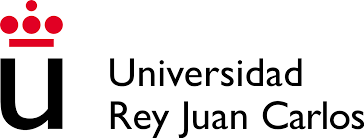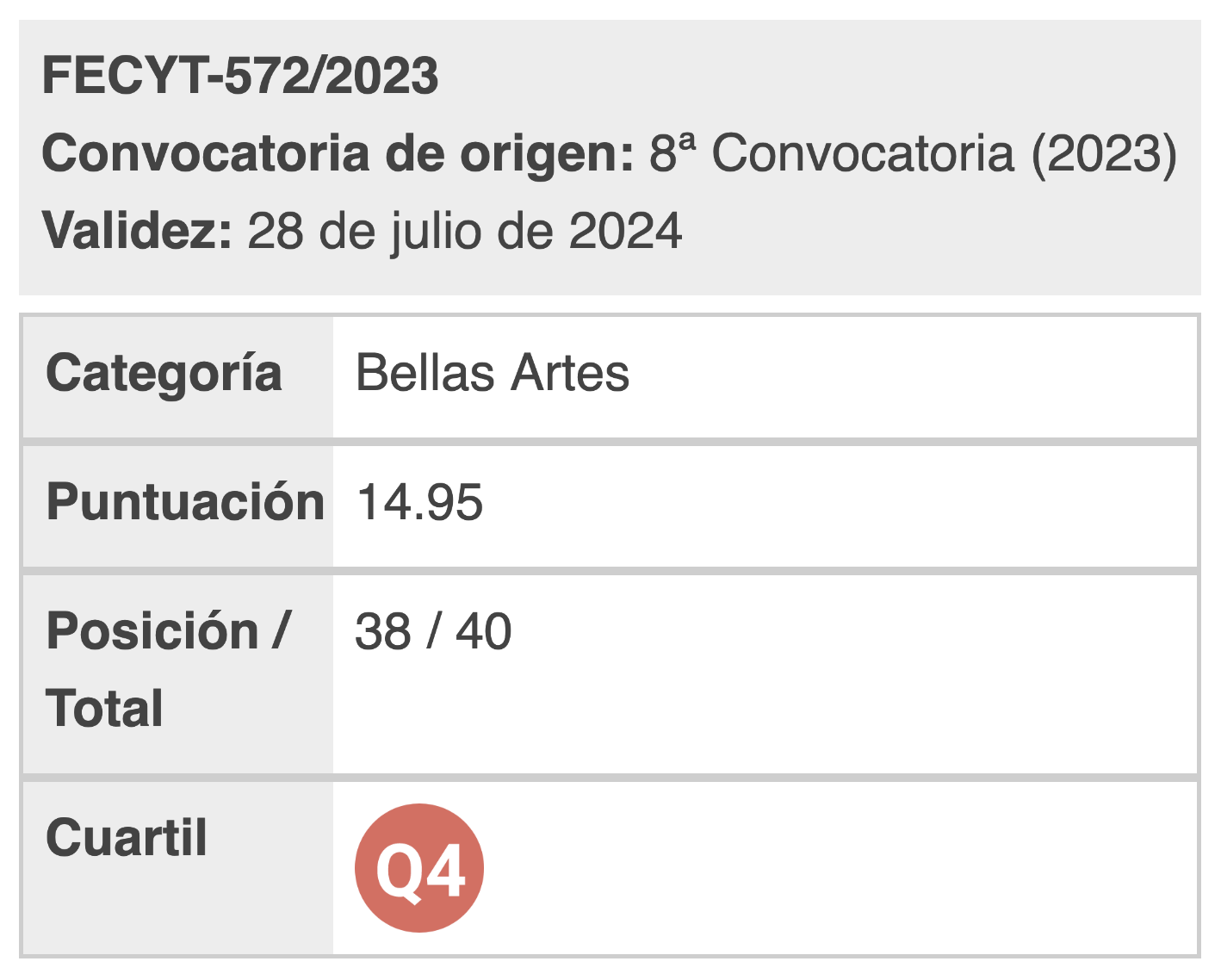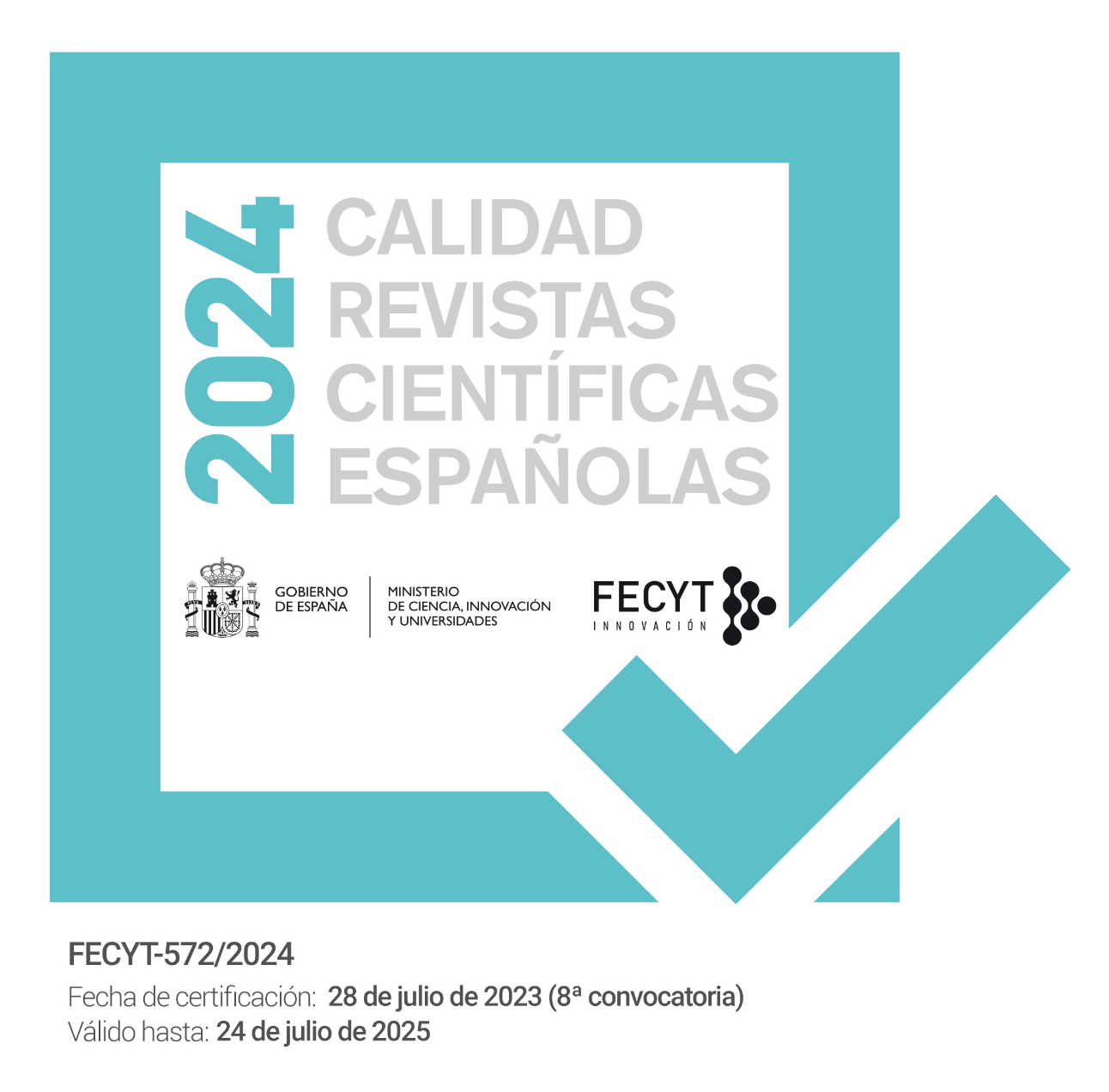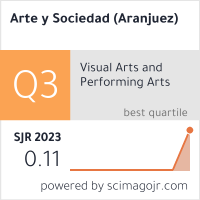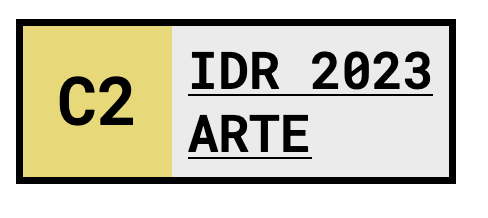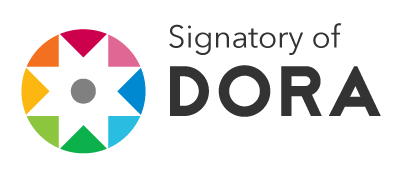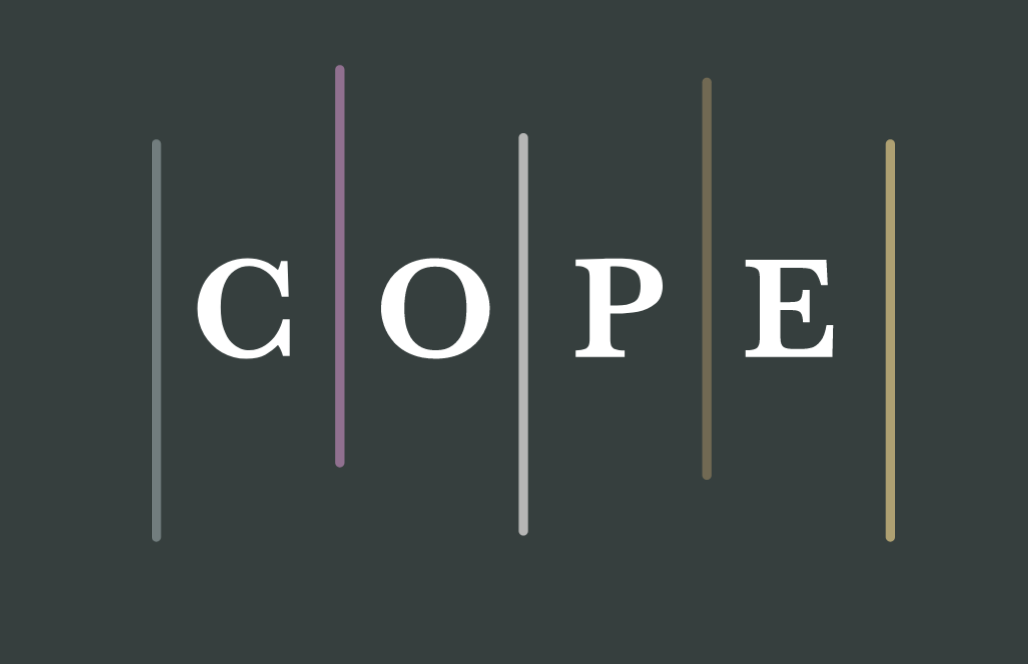The meaurement Goya's house and his Black Paintings in their original enviroment
DOI:
https://doi.org/10.5281/zenodo.7644660Keywords:
The Black Paintings houseAbstract
This research addresses the original rooms of Goya's house where he made the Black
References
Esteban, R., (2016). Las Pinturas negras de Goya bajo la luz de Jean Laurent. Iberic@l, Revue d’études ibériques et ibéro-américaines. (10), 207-217.
– (2019). Las fotografías de J. Laurent de las Pinturas negras de Goya, en Goya en la literatura, en la música y en las creaciones audiovisuales. Actas del seminario internacional, Calvo, J. I., (coord.), Zaragoza, Institución Fernando el católico. pp. 401-412.
Foradada, C., (2010) “Los contenidos originales de las Pinturas negras de Goya en las fotografías de Laurent. Las conclusiones de un largo proceso”. Goya. Revista de arte, (333), 320-339. Recuperado de:
– (2019a) “El interior de la Quinta del Sordo. Las Pinturas negras de Goya y la maqueta de León Gil de Palacio”, AACADigital, (46), 2019. Recuperado de: http://www.aacadigital.com/contenido.php?idarticulo=1508
– (2019b) Goya recuperado en las Pinturas negras y El coloso, Gijón, Trea.
– (2019c) “Las Pinturas negras de Goya recuperadas en la digitalización de las fotografías de Laurent”, en Revisiones sobre Arte, Patrimonio y Tecnología en la Era Digital. Actas del congreso internacional, Foradada, C., Ilara, P. (coords.), Gobierno de Aragón, pp. 95-105. Recuperado de: https://oaaep.unizar.es/wp-content/uploads/2019/09/ArteTecnologiaDigital.pdf
Garrido, C., (1984). Algunas consideraciones sobre la técnica de las Pinturas negras de Goya. Boletín del Museo del Prado, (13), 4-40.
Glendinning, N., (1975) “The Strange Translation of Goya's ‹Black Paintings›”, The Burlington Magazine, CXVII, (868), 465-479.
– (1977) The Interpretation of Goya’s Black Paintings. The Inaugural Lecture. Queen Mary College. University of London.
– (1992) “Las Pinturas Negras”, en AA.VV., Jornadas en torno al estado de la cuestión de los estudios sobre Goya. Universidad Autónoma de Madrid, pp. 41-51.
– (1994): “Lo gótico, lo funeral y lo macabro en la cultura española y europea del siglo XVIII”, Anales de Literatura Española, núm. 10, Universidad de Alicante, Departamento de Literatura Española, pp. 101-115.
– (1986) Glendinning, N., y Kentish, R., “Goya´s Country House in Madrid. The Quinta del Sordo”, Apollo CXXIII, 188, pp. 102-109. Edición en español: “La Quinta del Sordo de Goya, La casa y las Pinturas Negras a la luz de nueva documentación y de las fotografías de Laurent”, Madrid, Historia 16, (120), 99-109.
– (2004) “Las Pinturas Negras de Goya y la Quinta del Sordo. Precisiones sobre las teorías de Juan José Junquera”, Archivo Español de Arte, LXXVII, (307), 233-246.
Hervás, M., (2019) La Quinta del Sordo y sus Pinturas Negras. Dos siglos de desventuras. Madrid, Casimiro Libros.
Lafuente, E., (1947): “La situación y la estela del arte de Goya”, en Antecedentes, coincidencias e influencias del arte de Goya, cat. de la exp. celebrada en 1932. Sociedad Española de Amigos del Arte.
Magariños, C., (2014) Toledo en las fotografías de J. Laurent, Toledo, Universidad de Castilla-La Mancha. Recuperado de:
https://www.toledo.es/wp-content/uploads/2017/03/toledo-en-las-fotografias-de-juan-laurent.pdf
(Fecha de consulta 10/06/2021).
Moreno, M., (1988): “La Verdad rescatada por el Tiempo ante la Historia como testigo” y “6 cuadros de brujas”, en Sayre, E., Alfonso E. Pérez, A. E. (coords.), Goya y el espíritu de la Ilustración, cat. de la exp., Madrid, Museo del Prado, pp. 184-188 y 322-324.
Teixidor, C., Laguna, F. J., “Las Pinturas negras en la Quinta de Goya. Reconstrucción de la planta baja, con las fotografías de J. Laurent de 1874” en Goya en la literatura, en la música y en las creaciones audiovisuales, Actas del seminario internacional, Calvo, J. I., (coord.), Zaragoza, Institución Fernando el católico, 2019, pp. 401-412.
Yriarte, Ch., (1867) Goya. Sa biographie, les fresques, les toiles, les tapisseries, les esux-fortes et le catalogoue de l´oeuvre, París, Henri Plon. Edición bilingüe: traducción de Enrique Canfranc y Lourdes Lachén (1997) Zaragoza, Gobierno de Aragón, Departamento de Educación y Cultura.
– (1877) “Goya aquafortiste”, L´Art, IX, Universidad de Heidelberg, pp. 3-10, 34-40, 56-60 y 78-83.

Published
How to Cite
Issue
Section
License

This work is licensed under a Creative Commons Attribution 4.0 International License.
You are free to:
Share — copy and redistribute the material in any medium or format.
Adapt — remix, transform, and build on the material for any purpose, including commercial.
Attribution — You must properly acknowledge the authorship, provide a link to the license, and indicate if any changes have been made.
You may do so in any reasonable manner, but not in any way that suggests that you endorse or receive any endorsement by the licensor for your use.
No additional restrictions — You may not apply legal terms or technological measures that legally restrict you from doing what the license allows.

